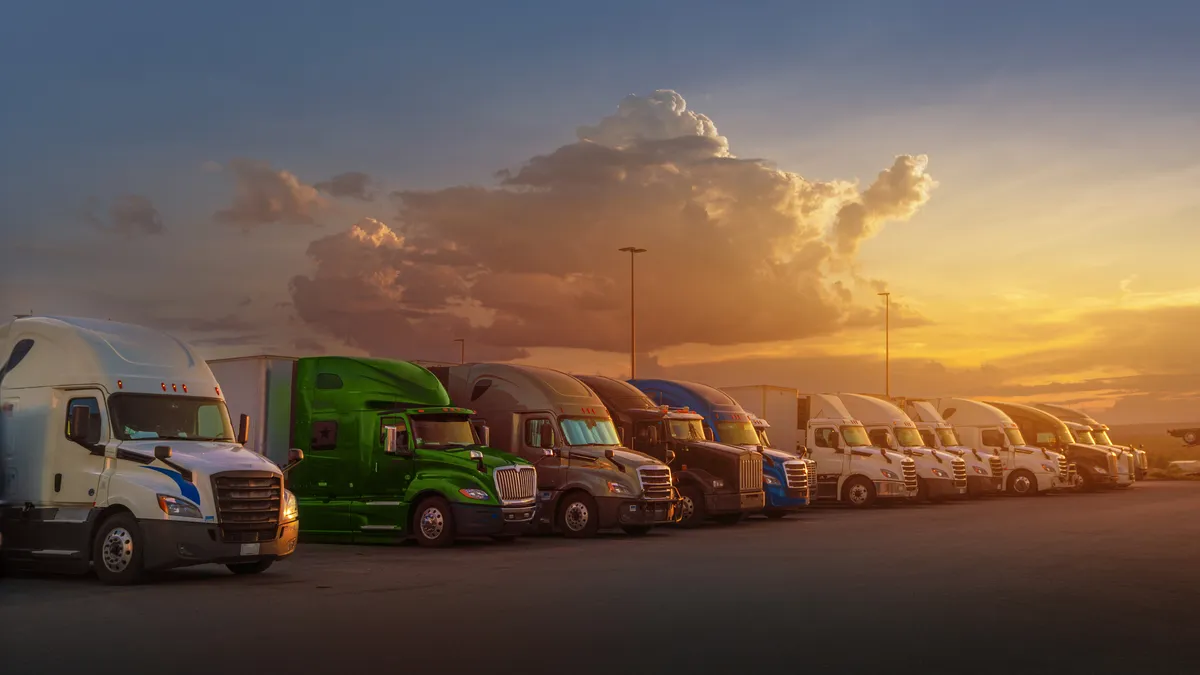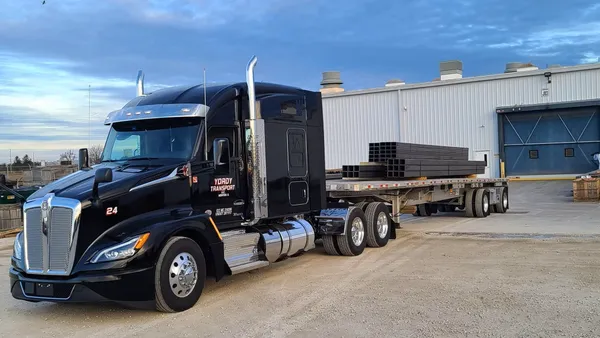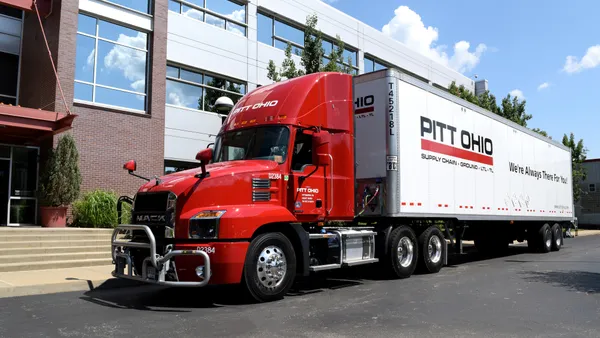Safety is at the heart of every trucking business. Nothing is more important. And in our fast-paced world of high expectations and low patience, rigorous safety programs have become even more essential.
That is why it is vital that every transportation operation understands how the costs of implementing a safety program compare with the costs of having a catastrophic accident. This piece breaks down the costs of dangerous events and explains how carriers can employ teamwork, training and technology to build a culture of safety.
Tallying the Costs
In 2023, crashes involving heavy trucks killed 4,970 people and injured 74,263 more in the United States. Delivery and truck driving was ranked the sixth-most dangerous job in the country, with a fatal injury rate roughly eight times that of all full-time workers. Injuries can be life-altering, to say nothing of the devastating impacts of a fatal crash.
The financial costs of an accident can include medical treatment for an injured driver, repairing or replacing equipment, damaged cargo, citation-related fines, the driver and equipment being kept off the road, and higher insurance premiums. If a lawsuit is filed, there will be legal fees, the vehicle may be detained long-term, and there is the potential for a financially ruinous multimillion-dollar “nuclear” verdict.
Accidents always impact the driver’s career. Most do not result in termination, but they typically make subsequent performance reviews more difficult and must be explained in future job interviews.
Finally, accidents make it harder for carriers to win customers and attract and keep top talent.
“Safe drivers want to work with safe carriers. Shippers want to use safe carriers. They will want to know a carrier’s CSA results and ISS recommendation,” said Gary Falldin, senior director of industry solutions with Trimble, referring to data published by the Federal Motor Carrier Safety Administration (FMCSA) as part of its Compliance, Safety, Accountability (CSA) program.
CSA results break down carriers’ performance in seven Behavior Analysis and Safety Improvement Categories (BASICs). Inspection Selection System (ISS) recommendations are used to prioritize carriers for roadside safety inspections.
Good drivers see solid records as signs of a place where they want to work. Subpar ratings can lead them to look elsewhere. Similarly, a good rating gives shippers confidence that the carrier will deliver their load undamaged. A tarnished record can push them to competitors.
Using Proven Technology
Technology solutions play a vital role in reducing the chance of accidents and mitigating the resulting costs in the event one occurs.
Video Intelligence Systems
Video intelligence systems use cameras and artificial intelligence to record accidents, near-misses and behaviors that increase risk, such as following too close and hard braking. They also help drivers avoid accidents and violations by alerting them to such things as following distances, unintentional lane departures and forward collision risks.
Driver-facing cameras address two leading causes of accidents: fatigue and distracted driving. The view into the cab tells back-office staff when a tired driver needs to get off the road or when a driver is smoking, using a mobile phone or engaging in other distracting behavior.
When an accident occurs that is not the truck driver’s fault, the video evidence can exonerate the driver, prevent a lawsuit and even allow the carrier to collect on damages and bodily injury or workers’ compensation.
Active Safety Technology
Active safety technology, such as automatic emergency braking, lane-keeping assist, stability control and adaptive cruise control are, according to Falldin, “proven to save lives.”
Navigation and Routing Tools
Commercial navigation and routing systems guide trucks on legal routes that are tailored to the vehicle’s characteristics (height, weight, etc.) and load (hazardous, wide, etc.) and avoid low bridges, restricted tunnels and unsafe turns.
Clear verbal, turn-by-turn directions and highly accurate geofencing around truck entrances and exits at customers’ facilities get drivers to their destination without potentially risky detours and backtracking.
Advance notification of upcoming lane changes and warnings that the driver is speeding or approaching a curve too fast curb risky behavior. Real-time weather and traffic alerts allow drivers and back-office teams to adapt to changing conditions.
In-cab Technology
Distraction-free in-cab technology, such as audible alerts and at-a-glance navigation, enables drivers to stay focused on the road, rather than on a screen. Mobile device management tools secure sensitive data to protect against cyber threats.
Preventative Maintenance Tools
Well-maintained equipment is less likely to break down, potentially causing an accident. Preventative maintenance solutions keep maintenance tasks on schedule and can detect issues early. Remote, real-time diagnostic capabilities help prevent unscheduled service events and hazardous driving scenarios.
Telematics and Fleet Management Solutions
Telematics and fleet management solutions integrate with other tools to help carriers analyze driver performance and vehicle data. By monitoring such things as hours of service, tire pressure and speed, they can help prevent accidents. Event recording and safety analytics dashboards help carriers monitor driver habits, alter behavior, take corrective action and identify driving patterns in need of coaching.
Technology Supports a Culture of Safety
While powerful, these tools are but pieces in the larger safety puzzle.
“Technology alone won't make you safe,” Falldin said. “The foundation is having a culture of safety. Then you build on that with the technology.”
Falldin believes that culture must be set at the top and then filter down throughout the organization and factor into every business decision.
“Every leader and every department must be involved in safety,” he said. “It can’t just be safety driving safety. Everyone has a role.”
Sales teams, for example, can ensure the pick-up and drop-off locations they book are safe. Operations teams ought not to ask drivers to take added risks to meet deadlines. When a driver calls in a roadside breakdown, the maintenance team should know the questions to ask to ensure the driver stays safe, wherever they are and whatever the situation is. Company-wide safety training creates a necessary baseline of understanding and ensures everyone communicates using the same terminology.
“Anybody who deals with drivers should go through the safety training that drivers do,” Falldin said. “Not the behind-the-wheel work, but the video and classroom training.”
Establishing a safety program is an investment. But when weighed against the wide-ranging and potentially catastrophic costs of an accident, it is a wise one. And given the overriding need to protect drivers and the motoring public, Falldin said, “It’s the right thing to do.”
Want to keep your drivers safer? Contact Trimble to learn how.










